Copyright
Contents
Preface
Structure of the Book
How to Use this Book
Online Resources
Acknowledgements
Notation
Notational Conventions
Notational Conventions for Probabilities
1 Machine Learning for Predictive Data Analytics
1.1 What Is Predictive Data Analytics?
1.2 What Is Machine Learning?
1.3 How Does Machine Learning Work?
1.4 What Can Go Wrong with Machine Learning?
1.5 The Predictive Data Analytics Project Lifecycle: CRISP-DM
1.6 Predictive Data Analytics Tools
1.7 The Road Ahead
1.8 Exercises
2 Data to Insights to Decisions
2.1 Converting Business Problems into Analytics Solutions
2.1.1 Case Study: Motor Insurance Fraud
2.2 Assessing Feasibility
2.2.1 Case Study: Motor Insurance Fraud
2.3 Designing the Analytics Base Table
2.3.1 Case Study: Motor Insurance Fraud
2.4 Designing and Implementing Features
2.4.1 Different Types of Data
2.4.2 Different Types of Features
2.4.3 Handling Time
2.4.4 Legal Issues
2.4.5 Implementing Features
2.4.6 Case Study: Motor Insurance Fraud
2.5 Summary
2.6 Further Reading
2.7 Exercises
3 Data Exploration
3.1 The Data Quality Report
3.1.1 Case Study: Motor Insurance Fraud
3.2 Getting to Know the Data
3.2.1 The Normal Distribution
3.2.2 Case Study: Motor Insurance Fraud
3.3 Identifying Data Quality Issues
3.3.1 Missing Values
3.3.2 Irregular Cardinality
3.3.3 Outliers
3.3.4 Case Study: Motor Insurance Fraud
3.4 Handling Data Quality Issues
3.4.1 Handling Missing Values
3.4.2 Handling Outliers
3.4.3 Case Study: Motor Insurance Fraud
3.5 Advanced Data Exploration
3.5.1 Visualizing Relationships Between Features
3.5.2 Measuring Covariance and Correlation
3.6 Data Preparation
3.6.1 Normalization
3.6.2 Binning
3.6.3 Sampling
3.7 Summary
3.8 Further Reading
3.9 Exercises
4 Information-based Learning
4.1 Big Idea
4.2 Fundamentals
4.2.1 Decision Trees
4.2.2 Shannon’s Entropy Model
4.2.3 Information Gain
4.3 Standard Approach: The ID3 Algorithm
4.3.1 A Worked Example: Predicting Vegetation Distributions
4.4 Extensions and Variations
4.4.1 Alternative Feature Selection and Impurity Metrics
4.4.2 Handling Continuous Descriptive Features
4.4.3 Predicting Continuous Targets
4.4.4 Tree Pruning
4.4.5 Model Ensembles
4.5 Summary
4.6 Further Reading
4.7 Exercises
5 Similarity-based Learning
5.1 Big Idea
5.2 Fundamentals
5.2.1 Feature Space
5.2.2 Measuring Similarity Using Distance Metrics
5.3 Standard Approach: The Nearest Neighbor Algorithm
5.3.1 A Worked Example
5.4 Extensions and Variations
5.4.1 Handling Noisy Data
5.4.2 Efficient Memory Search
5.4.3 Data Normalization
5.4.4 Predicting Continuous Targets
5.4.5 Other Measures of Similarity
5.4.6 Feature Selection
5.5 Summary
5.6 Further Reading
5.7 Epilogue
5.8 Exercises
6 Probability-based Learning
6.1 Big Idea
6.2 Fundamentals
6.2.1 Bayes’ Theorem
6.2.2 Bayesian Prediction
6.2.3 Conditional Independence and Factorization
6.3 Standard Approach: The Naive Bayes Model
6.3.1 A Worked Example
6.4 Extensions and Variations
6.4.1 Smoothing
6.4.2 Continuous Features: Probability Density Functions
6.4.3 Continuous Features: Binning
6.4.4 Bayesian Networks
6.5 Summary
6.6 Further Reading
6.7 Exercises
7 Error-based Learning
7.1 Big Idea
7.2 Fundamentals
7.2.1 Simple Linear Regression
7.2.2 Measuring Error
7.2.3 Error Surfaces
7.3 Standard Approach: Multivariable Linear Regression with Gradient Descent
7.3.1 Multivariable Linear Regression
7.3.2 Gradient Descent
7.3.3 Choosing Learning Rates and Initial Weights
7.3.4 A Worked Example
7.4 Extensions and Variations
7.4.1 Interpreting Multivariable Linear Regression Models
7.4.2 Setting the Learning Rate Using Weight Decay
7.4.3 Handling Categorical Descriptive Features
7.4.4 Handling Categorical Target Features: Logistic Regression
7.4.5 Modeling Non-linear Relationships
7.4.6 Multinomial Logistic Regression
7.4.7 Support Vector Machines
7.5 Summary
7.6 Further Reading
7.7 Exercises
8 Evaluation
8.1 Big Idea
8.2 Fundamentals
8.3 Standard Approach: Misclassification Rate on a Hold-out Test Set
8.4 Extensions and Variations
8.4.1 Designing Evaluation Experiments
8.4.2 Performance Measures: Categorical Targets
8.4.3 Performance Measures: Prediction Scores
8.4.4 Performance Measures: Multinomial Targets
8.4.5 Performance Measures: Continuous Targets
8.4.6 Evaluating Models after Deployment
8.5 Summary
8.6 Further Reading
8.7 Exercises
9 Case Study: Customer Churn
9.1 Business Understanding
9.2 Data Understanding
9.3 Data Preparation
9.4 Modeling
9.5 Evaluation
9.6 Deployment
10 Case Study: Galaxy Classification
10.1 Business Understanding
10.1.1 Situational Fluency
10.2 Data Understanding
10.3 Data Preparation
10.4 Modeling
10.4.1 Baseline Models
10.4.2 Feature Selection
10.4.3 The 5-level Model
10.5 Evaluation
10.6 Deployment
11 The Art of Machine Learning for Predictive Data Analytics
11.1 Different Perspectives on Prediction Models
11.2 Choosing a Machine Learning Approach
11.2.1 Matching Machine Learning Approaches to Projects
11.2.2 Matching Machine Learning Approaches to Data
11.3 Your Next Steps
A Descriptive Statistics and Data Visualization for Machine Learning
A.1 Descriptive Statistics for Continuous Features
A.1.1 Central Tendency
A.1.2 Variation
A.2 Descriptive Statistics for Categorical Features
A.3 Populations and Samples
A.4 Data Visualization
A.4.1 Bar Plots
A.4.2 Histograms
A.4.3 Box Plots
B Introduction to Probability for Machine Learning
B.1 Probability Basics
B.2 Probability Distributions and Summing Out
B.3 Some Useful Probability Rules
B.4 Summary
C Differentiation Techniques for Machine Learning
C.1 Derivatives of Continuous Functions
C.2 The Chain Rule
C.3 Partial Derivatives
Bibliography
List of Figures
List of Tables
Index
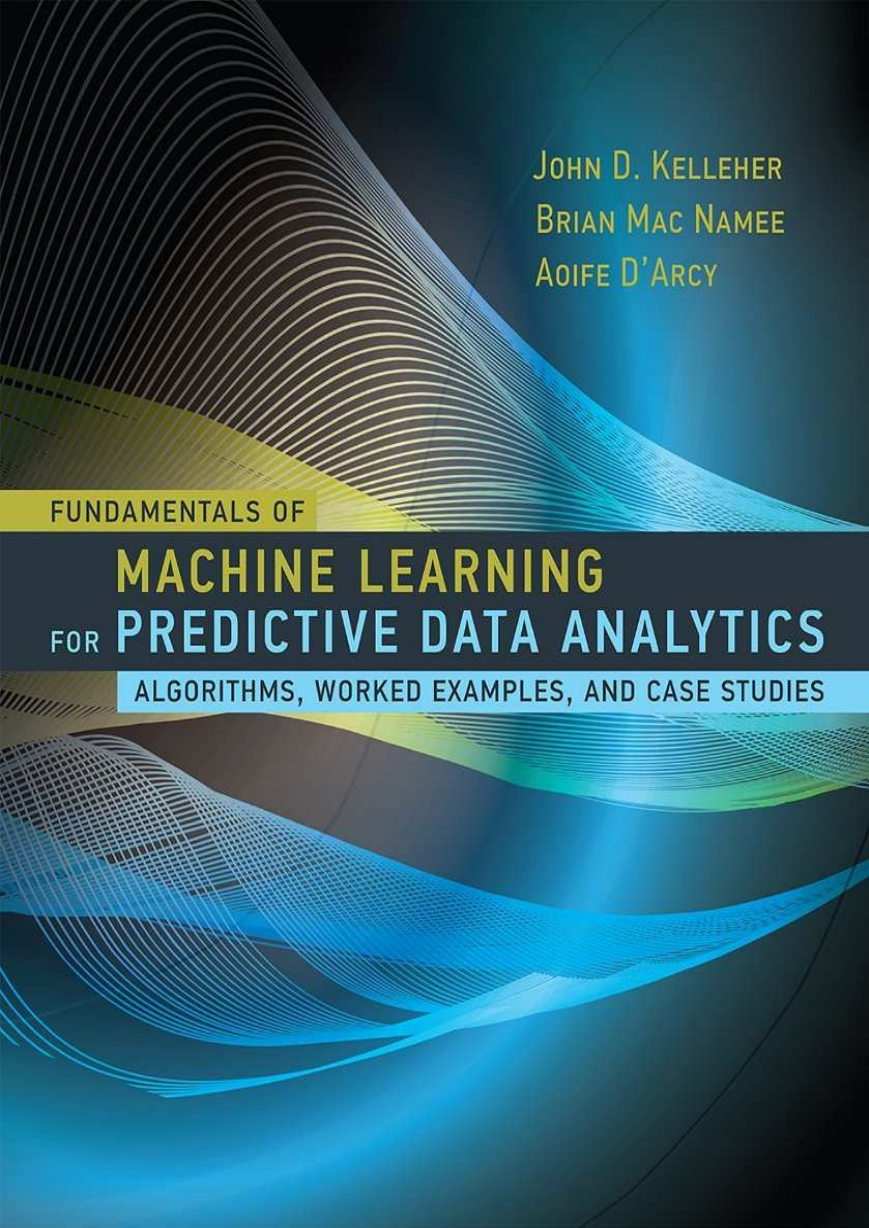
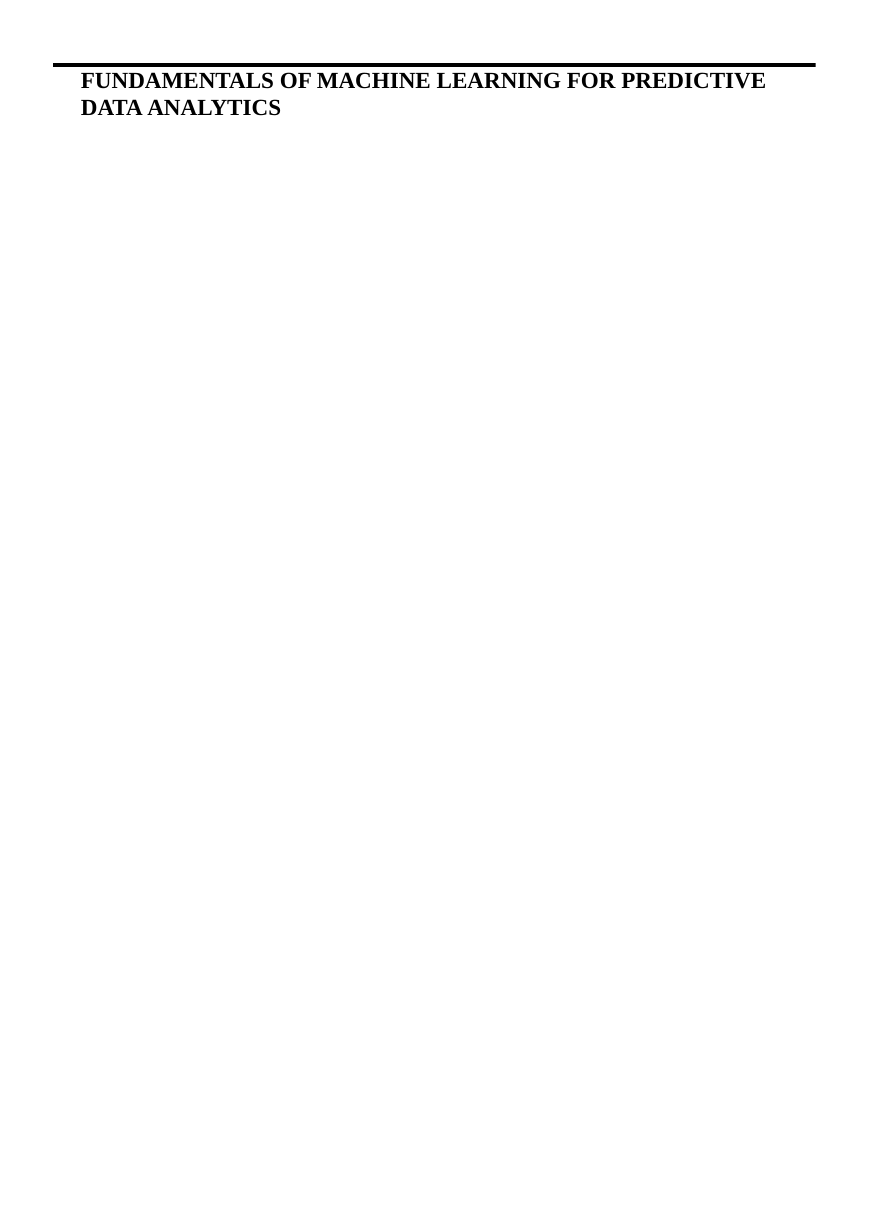
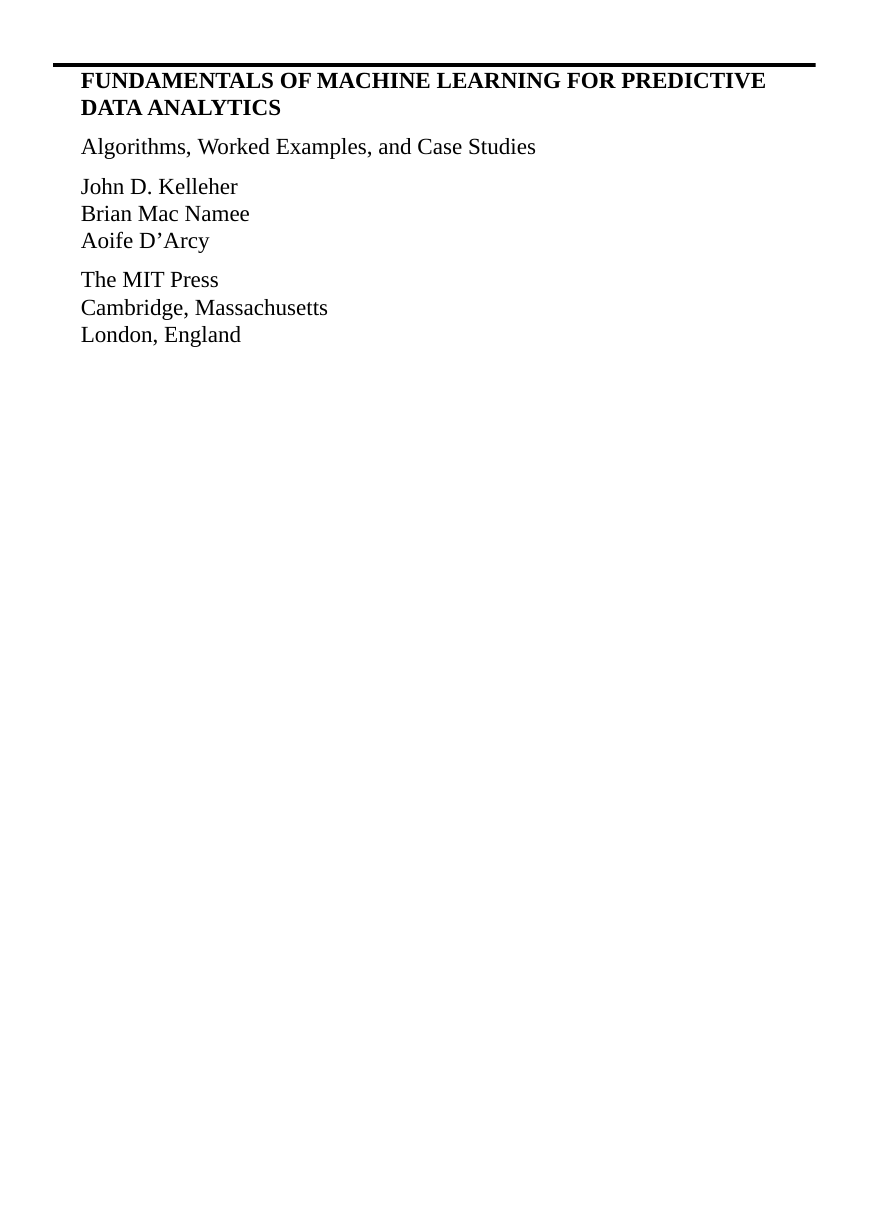


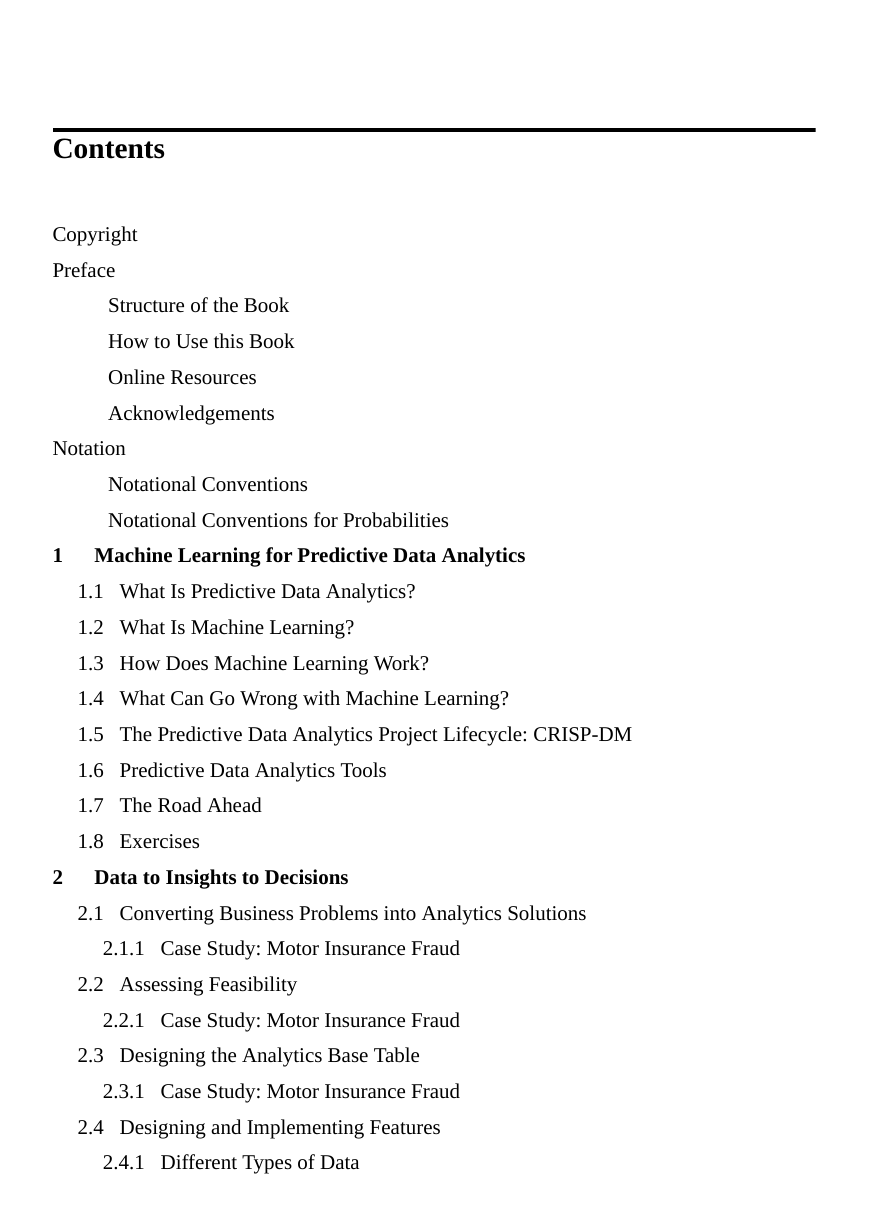
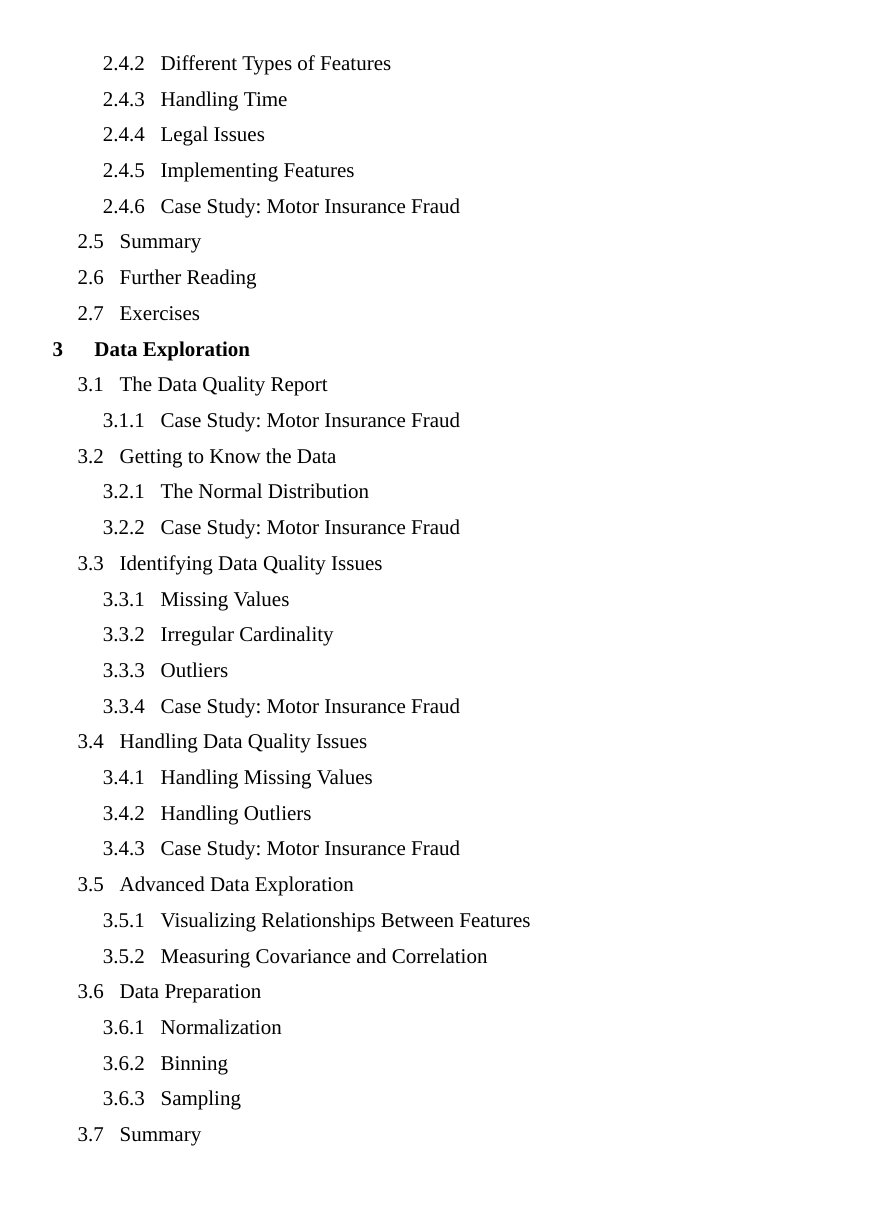
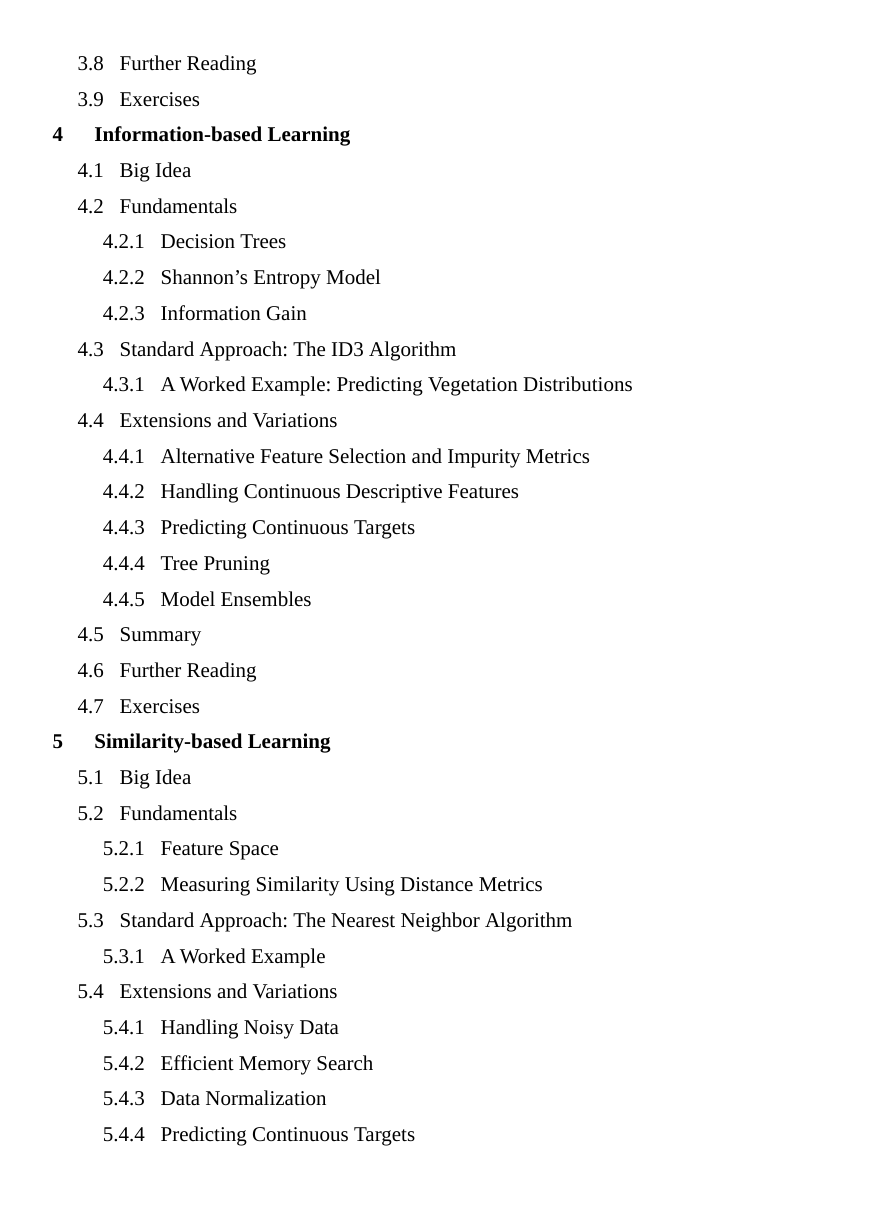








 2023年江西萍乡中考道德与法治真题及答案.doc
2023年江西萍乡中考道德与法治真题及答案.doc 2012年重庆南川中考生物真题及答案.doc
2012年重庆南川中考生物真题及答案.doc 2013年江西师范大学地理学综合及文艺理论基础考研真题.doc
2013年江西师范大学地理学综合及文艺理论基础考研真题.doc 2020年四川甘孜小升初语文真题及答案I卷.doc
2020年四川甘孜小升初语文真题及答案I卷.doc 2020年注册岩土工程师专业基础考试真题及答案.doc
2020年注册岩土工程师专业基础考试真题及答案.doc 2023-2024学年福建省厦门市九年级上学期数学月考试题及答案.doc
2023-2024学年福建省厦门市九年级上学期数学月考试题及答案.doc 2021-2022学年辽宁省沈阳市大东区九年级上学期语文期末试题及答案.doc
2021-2022学年辽宁省沈阳市大东区九年级上学期语文期末试题及答案.doc 2022-2023学年北京东城区初三第一学期物理期末试卷及答案.doc
2022-2023学年北京东城区初三第一学期物理期末试卷及答案.doc 2018上半年江西教师资格初中地理学科知识与教学能力真题及答案.doc
2018上半年江西教师资格初中地理学科知识与教学能力真题及答案.doc 2012年河北国家公务员申论考试真题及答案-省级.doc
2012年河北国家公务员申论考试真题及答案-省级.doc 2020-2021学年江苏省扬州市江都区邵樊片九年级上学期数学第一次质量检测试题及答案.doc
2020-2021学年江苏省扬州市江都区邵樊片九年级上学期数学第一次质量检测试题及答案.doc 2022下半年黑龙江教师资格证中学综合素质真题及答案.doc
2022下半年黑龙江教师资格证中学综合素质真题及答案.doc